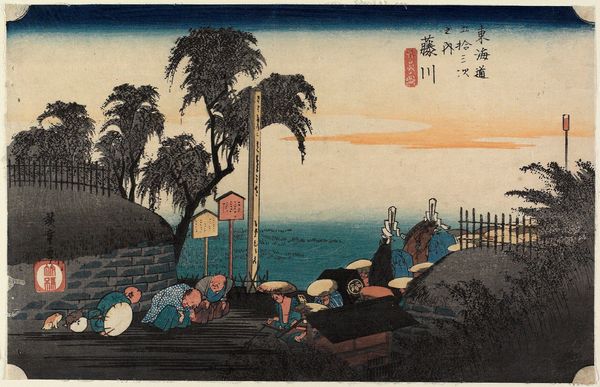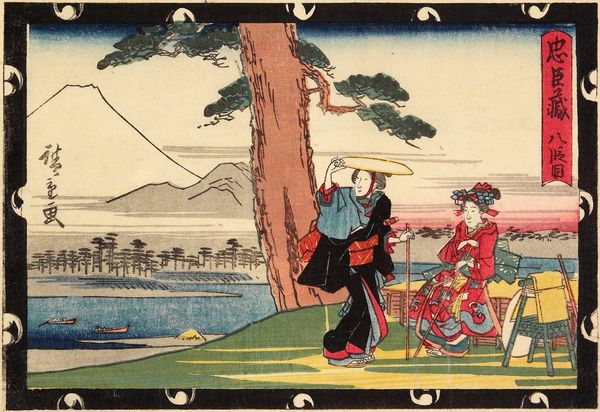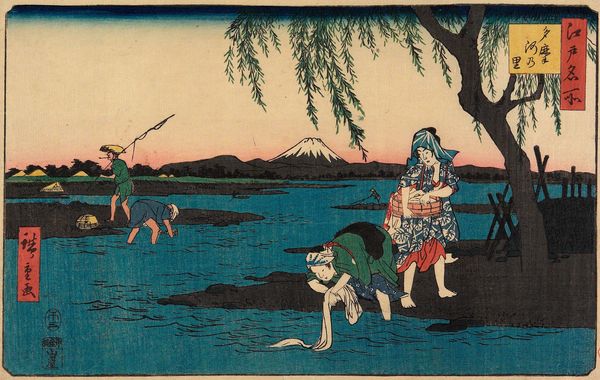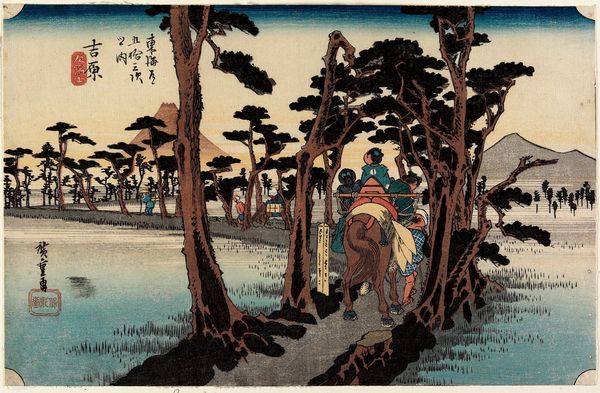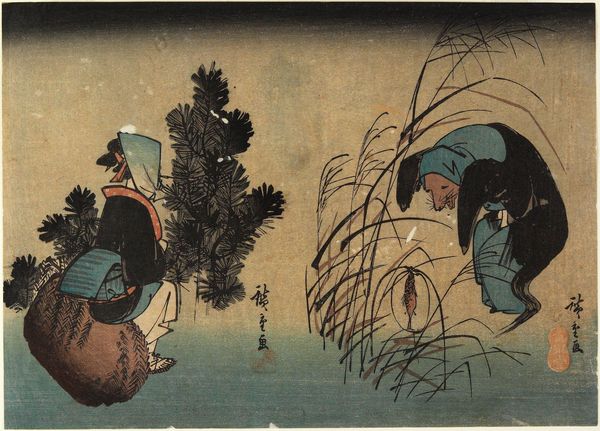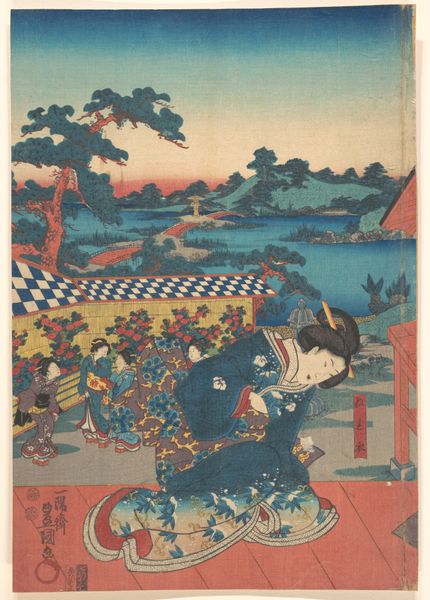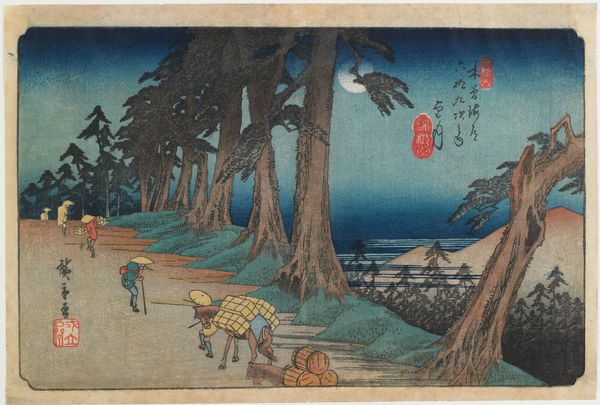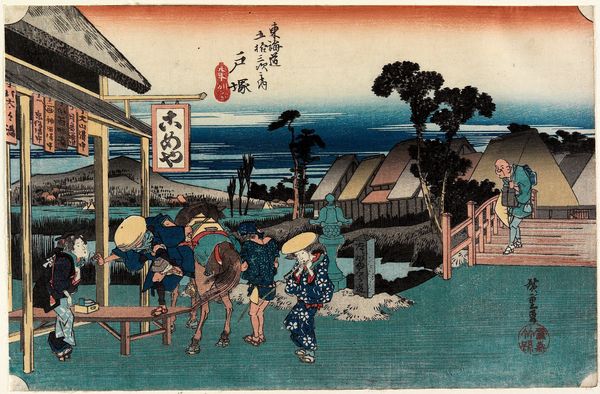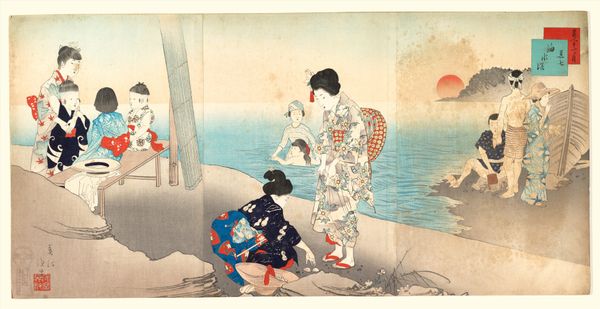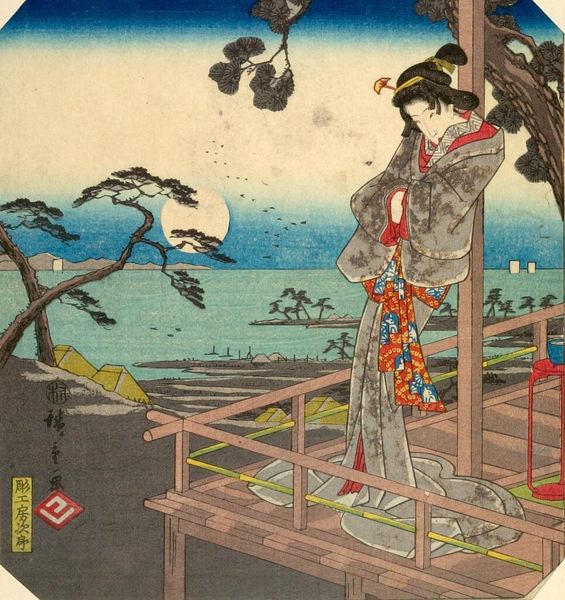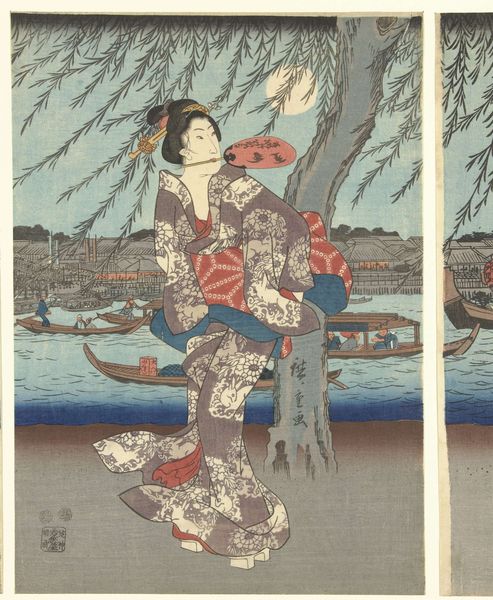
print, plein-air, ink, woodblock-print
# print
#
plein-air
#
asian-art
#
landscape
#
ukiyo-e
#
ink
#
woodblock-print
#
genre-painting
Dimensions: 6 3/4 × 10 7/8 in. (17.1 × 27.7 cm) (image, sheet, uchiwa-e)
Copyright: Public Domain
Curator: This is Utagawa Hiroshige’s “Kurōdo Sakon,” a woodblock print made sometime between 1843 and 1846. The colors are quite striking, aren't they? Editor: Yes, they evoke a sense of serenity mixed with perhaps a touch of melancholy. It’s that horizontal band of warm sunset colors set against the indigo blue sky. How was the emotional impact of color understood at the time? Curator: Ukiyo-e prints like these were made through a collaborative process involving the artist, block carver, printer, and publisher. The publisher effectively coordinated the whole material production and was often responsible for decisions regarding colour. Editor: Interesting. I’m drawn to the two women depicted within the landscape, situated so differently within it. Tell me more about who they are. Their posture seems really meaningful, placing them within a cultural understanding of labor. Curator: Well, they would likely be understood as representing ideals of feminine beauty of the time. These prints became widely popular due to the urbanization of Japan. As such, there's something manufactured, you know? Something made and made for someone, by specific actors, that cannot be ignored when assessing these works. Editor: Precisely. How are the roles of women depicted here informed by broader socioeconomic power dynamics? We have one figure leaning in over the water, seemingly focused on material labour and one seemingly posed to be watched as she crosses a threshold. Curator: Perhaps we could understand them through the lens of contemporary gender roles, and even how those ideals were disseminated and consumed. Their clothes are finely printed, showing they are not, or rather, are not presenting themselves to be working class. They embody these contradictions: leisure and work, access and restriction. Editor: It's also important to acknowledge the limitations inherent in interpreting such artwork. What materials are being mobilized, what is present, and what is missing from the story told? We must approach it with criticality and self-awareness. Curator: I concur completely. Reflecting on the print’s various artistic and economic production layers is indeed crucial to a fuller understanding of the subject presented and also to acknowledge how deeply rooted this object is in social practice. Editor: The play of color and form alongside these tensions creates a rich viewing experience and raises many complex questions! Curator: Indeed, a complex yet fascinating depiction. Thank you for taking the time to explore it together.
Comments
No comments
Be the first to comment and join the conversation on the ultimate creative platform.
